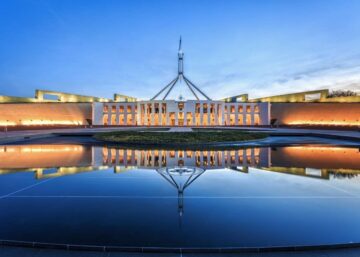Superannuation legislation is complex and always changing. In this SMSF update, we take a look at the latest changes to rules affecting superannuation plus COVID-specific issues for SMSFs.
Changes from 1 July 2020
1. Increase to the ‘work test’ age
The ‘work test’ is satisfied if a member has been gainfully employed for 40 hours in 30 consecutive days. The ‘work test’ age has been increased from 1 July 2020 from 65 to 67. This means that anyone who is 66 years or younger doesn’t have to satisfy the ‘work test’ in order for the Trustee to accept their super contribution.
Contribution acceptance rules from 1 July 2020:
| Under 65 | – all contributions except Downsizer* contributions |
| 65 to under 67 | – employer contributions – member contributions – Downsizer contributions |
| 67 to under 75 | – employer Superannuation Guarantee contributions – member contributions IF ‘work test’ is satisfied – employer non-Superannuation Guarantee contributions – Downsizer contributions |
| 75+ | – employer Superannuation Guarantee contributions – Downsizer contributions |
* Downsizer was introduced to allow a person 65 years or older who has sold their home to contribute those proceeds (up to $300k) to superannuation.
2. Increase to spouse contribution age
An 18% tax offset is available on funds contributed to a spouse’s superannuation (up to a maximum of $540). Previously a member had to be 69 years old for their spouse to make a contribution to super on their behalf. This has now been increased to 74 years old. If the receiving spouse is aged 67 to 74, they must meet the ‘work test’.
COVID-19 related matters for SMSFs
1. If you’re receiving a pension
For funds drawing a pension, minimum draw down rates for the 2019-20 and 2020-21 years have been halved.
Note that there is only a minimum amount, no maximum amount, so you can draw more than this.
| Age | Default min. drawdown rates | 2019-20 & 2020-21 reduced rates |
| Under 65 | 4% | 2% |
| 65 to 74 | 5% | 2.5% |
| 75 to 79 | 6% | 3% |
| 80 to 84 | 7% | 3.5% |
| 85 to 89 | 9% | 4.5% |
| 90-94 | 11% | 5.5% |
| 95 or more | 14% | 7% |
If you have drawn payments in excess of minimum, there are a couple of strategies available. This applies to any year but is particularly pertinent to this financial year because of the 50% reduction. That is, if you have continued to draw what you did in pre-COVID times, the excess over the minimum is more likely to be higher than it would normally be.
How the excess is treated will depend upon the circumstances of the member:
If you are affected by Transfer Balance Cap introduced 1 July 2017, which limits how much a person can transfer to a $1.6M cap, there is a strategy to treat excess payments over the minimum as coming out of their accumulation account. This maximises the fund’s claim for exempt pension income.
If you are not affected by the Transfer Balance Cap, then there is a strategy for those members to treat payments over the minimum as a partial commutation to create more Transfer Balance Cap gap for later on. Commutation is an election to convert future pension entitlement to a lump sum. For example, if there’s a situation of a spouse passing away it provides some gap to allow the deceased spouse’s pension to remain in super and be paid to be paid to the surviving spouse as a death benefit pension.
The best strategy initially is to have a discussion with your SMSF adviser or accountant about which way to proceed.
2. If you’re a SMSF landlord providing rent relief
Due to the financial effects of COVID-19, tenants (both commercial and residential) may not be able to pay rent due to loss of income. Rent relief measures have been put in place by the federal and state governments.
Where the landlord providing rent relief is a SMSF, the main concern is from a compliance perspective is whether the tenant is a related party. For example, if the tenant is a business and that business is operated by a member of the fund.
Keep in mind that the only time a SMSF can lease a property to a related party is where that property meets the definition of ‘business real property’ such as commercial premises. One of the requirements that allow this to occur is that the lease is on ‘arm’s length terms’. So, if the SMSF provides rent relief to the related party, the concern is that the reduced rent is less than commercial value and therefore a situation arises where the SMSF is not compliant with the relevant rules.
The ATO have stated that they will take no compliance action if a SMSF landlord provides rent relief to a related party both for the 2019/20- and 2020/21-income years provided the following occurs:
- The rent relief is provided on commercial terms. The National Cabinet Mandatory Code of Conduct that can be followed which sets out the principals of providing rent relief. Various state and territory Governments codes have adopted that.
- You need to show evidence that the rent relief is a direct effect of COVID-19. For example, the tenant’s income has dropped by 40%.
- You need to show that the tenant has requested relief due to COVID-19. Even though as a related party the business owner and SMSF trustee may be the same person, we still need to show documentation that the request was made.
- You must have appropriate documentation to evidence this. For example, a formal variation to the lease agreement signed by the landlord and tenant.
While the ATO have stated they won’t take compliance action, your SMSF may still be audited in the future and this evidence will need to be provided.
3. If a lender provides loan relief to a SMSF
Super funds can borrow to buy property and lease it under what is known as a Limited Recourse Borrowing Arrangement (LRBA). Borrowed funds may come from a commercial lender or a related party lender.
If the loan is from a commercial lender:
- Per Australian Banking Association (ABA) guidelines
- Initial 6-month deferral of loan repayments which ends in September
- Interest continues to be charged
- Potential 4-month extension of deferral if loan payments cannot re-commence
If the loan is from a related party:
- To stay compliant, you need to ensure that the loan is on commercial terms. If the terms are favourable to the SMSF, the risk is that income from the arrangement will be treated as non-arm’s length income and taxed at 45%. Examples of favourable terms would be is the interest rate was extremely low, no repayments required off principal or a loan to value ratio (LVR) of 100%.
- The ATO has stated that compliance as long as the relief provided by the related party lender is commercial (i.e. along the same lines as a commercial lender) then they won’t view this as breaching the arms-length rules.
4. SMSF residency relief
To be a complying fund, a SMSF must satisfy the ‘Australian superannuation fund’ definition.
There are three tests and all three must be satisfied AT ALL TIMES:
- The fund must be established in Australia or owns an Australian asset; AND
- Central management and control must be in Australia (temporary travel outside Australia is permitted up to a limit of 2 years); AND
- Members must active.
The ATO have stated there will be compliance relief for SMSF trustees unable to return to Australia due to COVID-19.
Further help:
If you need tailored advice for your SMSF, our superannuation experts give hands on help to keep your fund compliant. Contact us on (07) 3023 4800 or at mail@marshpartners.com.au to organise a chat about your retirement goals.
You can find out more about working with Marsh & Partners here. As your Absolute.Account.Ability partner we’re on a mission to make your business life better. We’ll help you set goals for your business, devise an Action Plan to make them happen and meet with you regularly to ensure you stay on track.
Share this article on LinkedIn:
Subscribe to our newsletter:
Get tax updates, business advice and seminar invitations delivered straight to your inbox.







